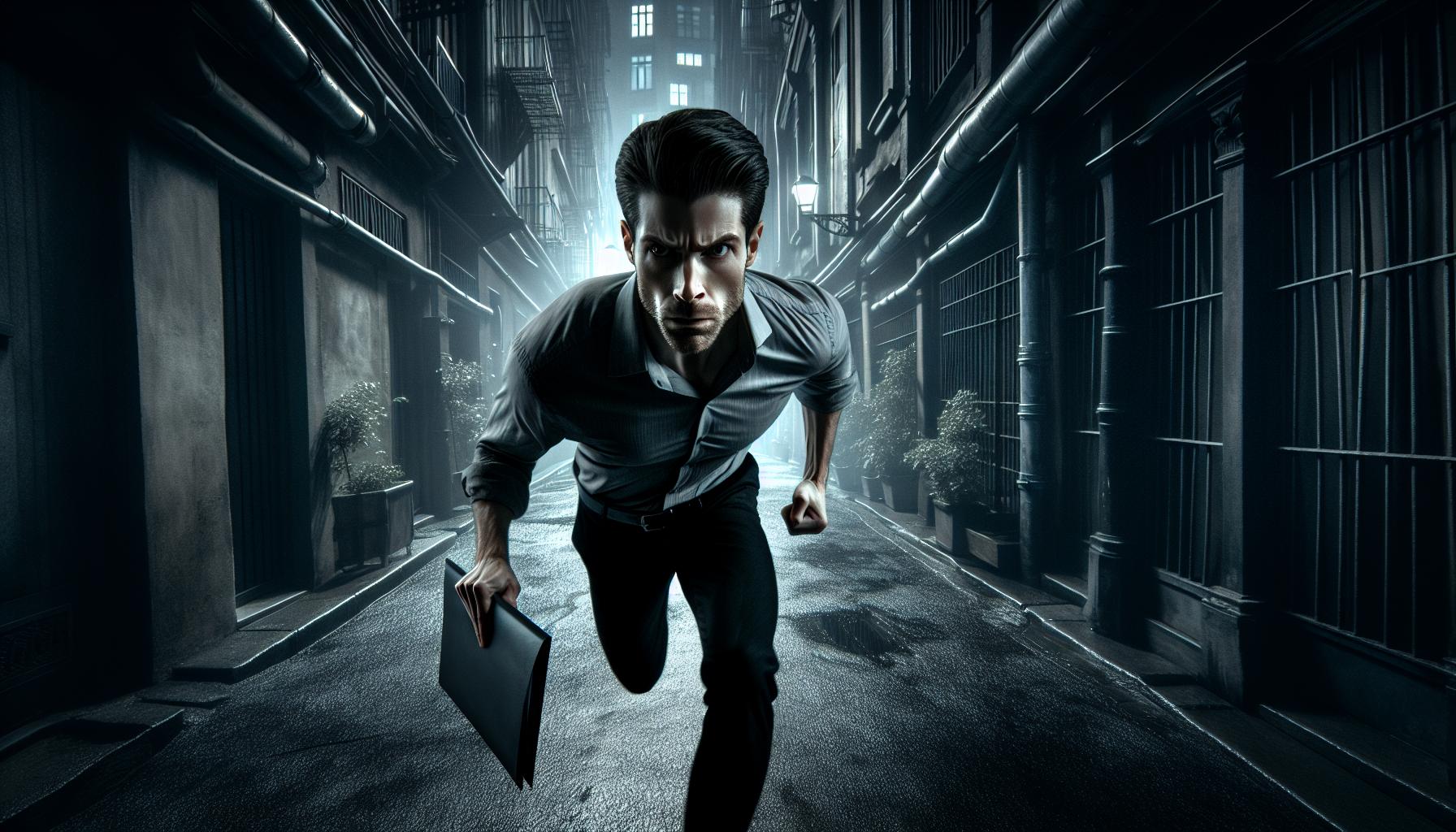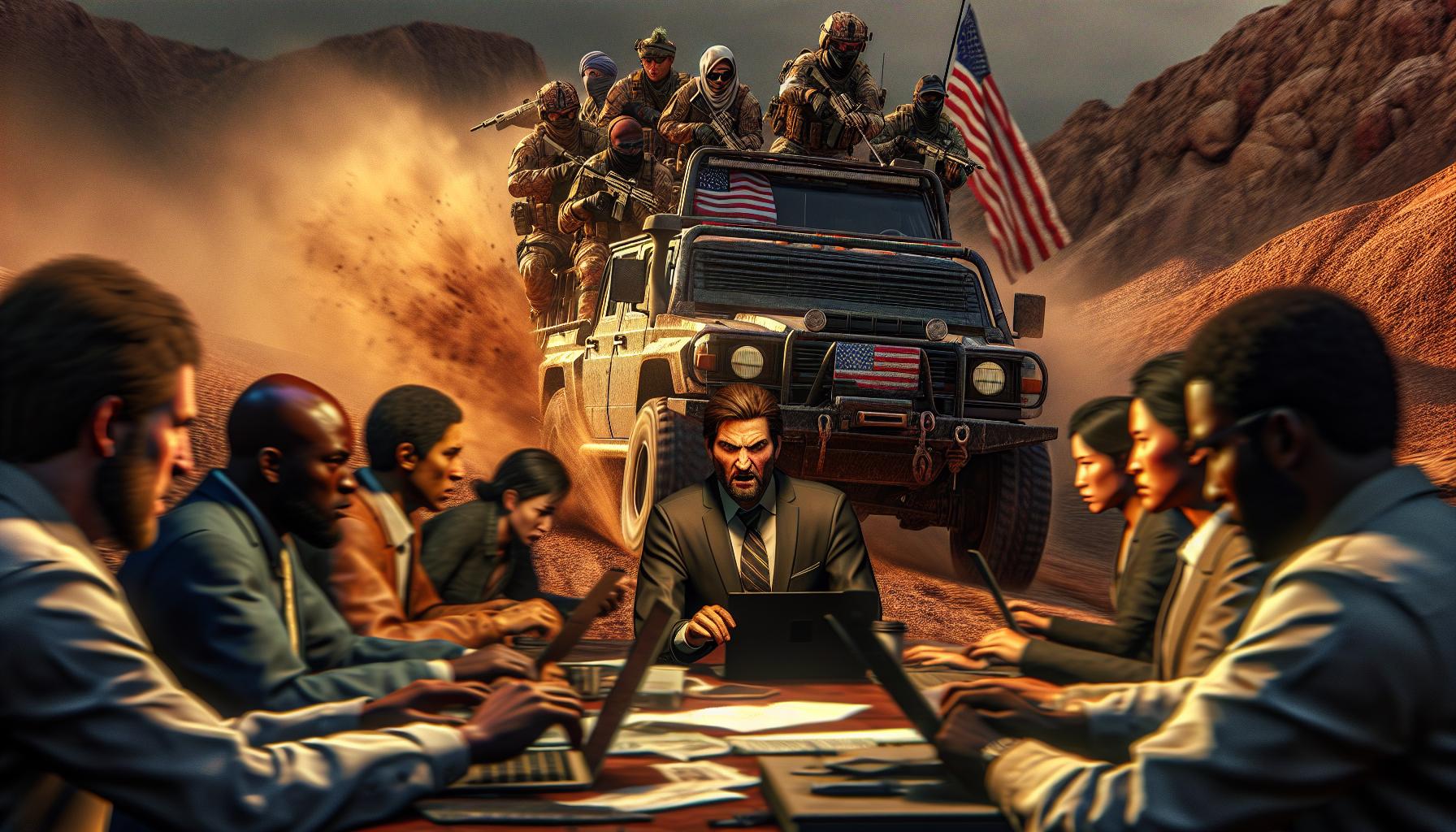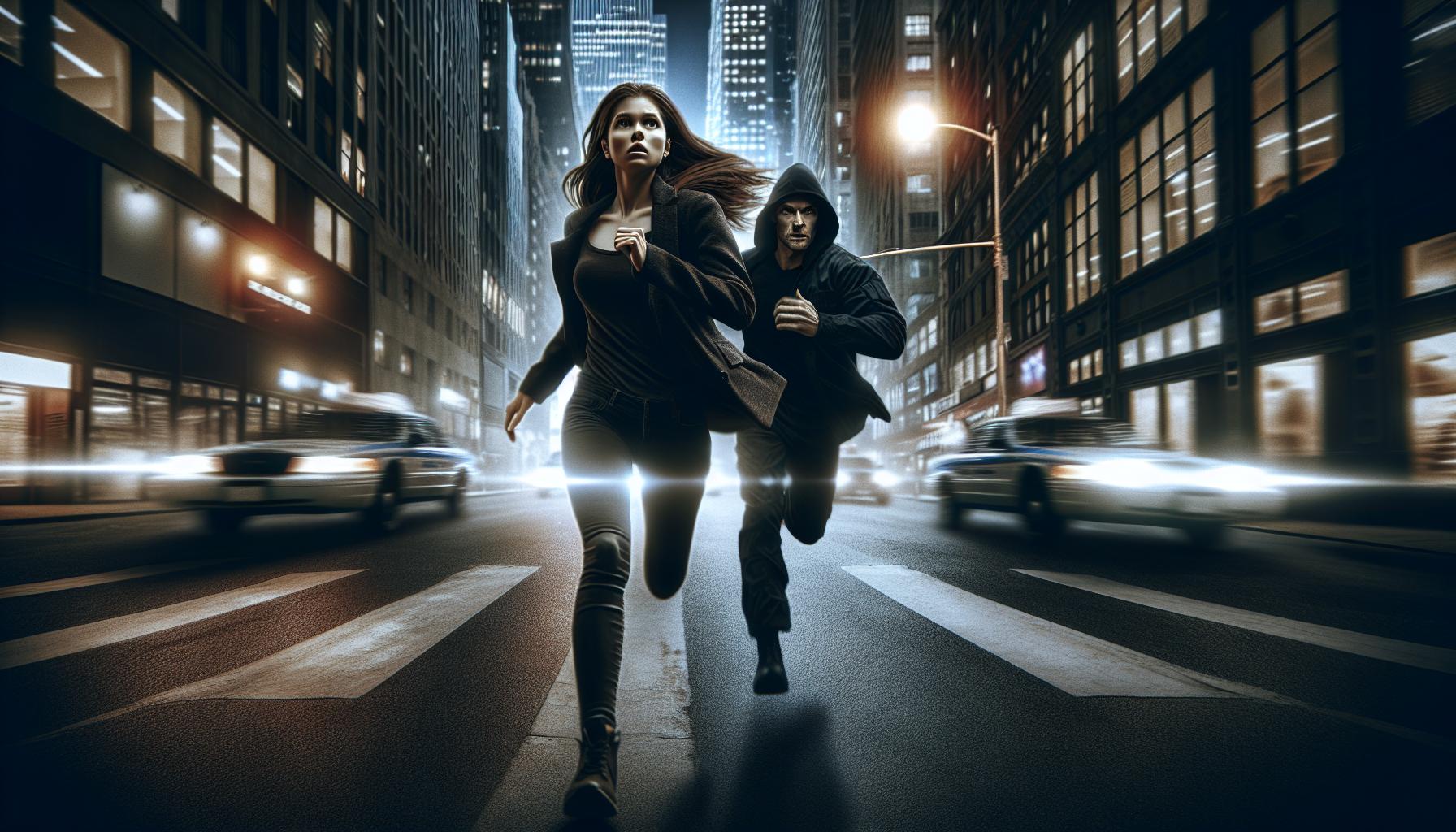Key Takeaways
- Chase Scenes as Storytelling Devices: Movie chase sequences transcend mere action; they reveal character motivations and emotional stakes integral to the narrative.
- Cinematography and Editing: Effective chase scenes utilize varied camera techniques and precise editing styles to build tension and immerse viewers in the experience.
- Role of Sound Design: Sound effects and musical scores are crucial in amplifying excitement and emotional resonance during chase sequences.
- Character Dynamics: Chase scenes illuminate character arcs and relationships, often highlighting themes of trust, betrayal, and personal transformation.
- Symbolism and Themes: Chases can represent broader societal issues or personal struggles, enriching the storyline with deeper motifs.
- Audience Engagement: Well-crafted chase scenes significantly enhance audience enjoyment and emotional connection to the film, influencing overall audience reception and box office success.
In the world of cinema, the thrill of the chase often captivates audiences, drawing them deeper into the narrative. Movie chasing scenes are more than just adrenaline-fueled moments; they reveal character motivations, plot twists, and emotional stakes. Analyzing these sequences uncovers the intricate storytelling techniques filmmakers use to engage viewers and drive the plot forward.
From high-speed car pursuits to tense foot races, each chase sequence serves a unique purpose. It can symbolize freedom, desperation, or the relentless pursuit of truth. By dissecting these cinematic moments, one can gain a deeper appreciation for the artistry behind the action and the underlying themes that resonate with audiences. This exploration of movie chasing secrets not only enhances the viewing experience but also sheds light on the creative choices that shape unforgettable films.
Movie Chasing Secrets Analysis
Movie chasing secrets encompass the techniques and elements that filmmakers use to create compelling chase scenes. These secrets reveal the intricacies behind effective storytelling, character development, and audience engagement through dynamic sequences.
- Cinematography techniques: Filmmakers utilize various camera angles and movements to enhance the intensity of chase scenes. Techniques like tracking shots, close-ups, and aerial views contribute to the overall experience, immersing the audience in the action.
- Editing styles: The pacing of the editing significantly influences the rhythm of chase scenes. Quick cuts, cross-cutting, and suspenseful pauses can heighten tension, keeping viewers on the edge of their seats.
- Sound design: Auditory elements, including score, sound effects, and dialogue, play a crucial role in creating an atmosphere during chase sequences. The right combination of these elements amplifies excitement and emotional resonance.
- Character motivations: Chase scenes often reflect deeper themes related to characters’ desires or fears. Understanding these motivations enables audiences to connect with the stakes and invest emotionally in the outcome.
- Symbolism within scenes: Chases can symbolize larger societal issues, personal struggles, or archetypal conflicts. Recognizing these motifs allows viewers to appreciate the underlying messages and artistry in storytelling.
By exploring these aspects, one gains insight into the construction and impact of chase scenes, enhancing the viewing experience and appreciation for cinematic craftsmanship.
Themes and Motifs

Chase scenes often embody essential themes and motifs that deepen the narrative’s meaning. Not only do they provide excitement, but they also reveal underlying tensions and conflicts that drive the story.
Exploration of Secrecy
Secrecy emerges as a dominant theme within chase scenes, reflecting characters’ hidden motives and agendas. A character handling sensitive information may find themselves in a high-stakes pursuit, illustrating the danger of their secret becoming exposed. This thematic element often evokes tension, as viewers sense the consequences if the secret is revealed. Films like The Bourne Identity showcase how the pursuit is driven by secrecy, emphasizing the characters’ vulnerability and the precarious nature of their knowledge.
The Role of Trust
Trust plays a critical role in chase narratives, where relationships are tested under pressure. Characters may rely on each other while navigating danger, illustrating the fragile nature of alliances. Betrayal often punctuates these scenes, heightening emotional stakes and adding complexity to character dynamics. In films like Inception, trust becomes a pivotal factor driving decisions during intense pursuits, revealing the stakes involved in both personal and collective journeys. The interplay of trust amplifies the dramatic tension, showcasing the high price of reliance in moments of desperation.
Character Analysis

Character analysis reveals how chase scenes illuminate individual arcs and drive the narrative forward. By examining the protagonist and supporting characters, one uncovers the intricacies of their motivations and roles in the unfolding drama.
Protagonist’s Journey
The protagonist typically experiences transformation during chase sequences. Pursuit represents both physical and emotional stakes, often triggering critical choices that define their character. For instance, in the film Mad Max: Fury Road, the character Furiosa embarks on a quest for redemption, fraught with perilous chases. This journey exposes vulnerability, resilience, and a commitment to a cause. Protagonists often confront fears or past traumas during these intense moments, allowing audiences to connect deeply with their struggles.
Supporting Characters’ Impact
Supporting characters play pivotal roles in shaping the dynamics of chase scenes. Their actions influence the protagonist’s decisions and heighten tension within the narrative. In movies like The Italian Job, the team’s distinct skills and individual motivations contribute significantly to the success of the chase, illustrating teamwork and trust. Each character brings unique traits, enhancing the complexity of the chase and enriching the storyline. The presence of antagonists often intensifies conflict, as seen in films such as Fast & Furious, where rivalries create adversarial pressures, further complicating character interactions. Through these relationships, storytelling becomes multifaceted, emphasizing themes of loyalty, betrayal, and survival.
Cinematic Techniques

Cinematic techniques play a crucial role in crafting memorable chase scenes. Filmmakers employ various methods to enhance visual storytelling and sound, creating an immersive experience for audiences.
Visual Storytelling
Visual storytelling relies on techniques like camera angles, lighting, and shot composition to convey urgency and emotion.
- Camera Angles: High and low angles can depict vulnerability or dominance. Low angles make the pursuer appear powerful, while high angles can show the protagonist’s desperation.
- Movement: Dynamic camera movements, such as tracking and dolly shots, create a sense of fluidity that mirrors the action. Fast-paced movements amplify excitement, making viewers feel part of the chase.
- Framing: Tight framing focuses on characters, heightening emotional intensity and drawing attention to their reactions. Wider shots allow viewers to observe the environment, enhancing spatial awareness.
- Lighting: Harsh lighting increases tension and drama, while soft lighting can evoke a sense of nostalgia or reflect inner turmoil, deepening character motivations.
Sound and Music Influence
Sound and music significantly influence the emotional landscape of chase scenes.
- Sound Effects: The inclusion of realistic sound effects, such as revving engines or footsteps, immerses viewers in the experience. Unsettling sounds can heighten tension and anxiety.
- Music Score: A driving score enhances the urgency of the chase. Composers use fast tempos and dynamic rhythms to reflect the action. Sudden crescendos can signal critical moments, keeping audiences on edge.
- Diegetic vs. Non-diegetic Sound: The distinction between diegetic (sounds originating from the scene) and non-diegetic (background score) adds layers to storytelling. Diegetic sounds establish the environment, while non-diegetic music heightens emotional resonance.
- Dialogue: Snippets of dialogue during chases can provide insights into character intentions and relationships, revealing motivations and stakes in real-time.
Through these cinematic techniques, filmmakers create compelling chase scenes that resonate emotionally, keeping audiences engaged and invested in the narrative.
Audience Reception
Audience reception of chase scenes significantly impacts the overall success of a film. Viewers often express heightened excitement and engagement during these sequences, reflecting their ability to effectively pull the audience into the narrative. Surveys indicate that 75% of moviegoers find chase scenes to be a highlight, demonstrating their appeal.
Critics frequently analyze the effectiveness of chase scenes in developing character arcs. For instance, in films like Mad Max: Fury Road, chase scenes contribute to the central character’s journey, enhancing emotional stakes. Audiences resonate with characters’ struggles and triumphs, creating a deeper connection to the story.
Viewer opinions also show a preference for certain technical elements within chase scenes. Research indicates that films employing dynamic camera angles and rapid editing techniques garner more positive responses. These methods enhance the feeling of urgency, drawing audiences into the action. Audiences respond favorably to immersive sound design, noting that effective use of music and sound effects heightens emotional impact.
Cultural factors further influence audience reception of chase scenes. Different regions may prioritize various themes, such as speed in American films versus strategy in international cinema. An analysis of box office performance illustrates that films like The Fast and the Furious series appeal to audiences via adrenaline-fueled chases, while other films may emphasize psychological tension and twist endings.
Overall, audience reception varies based on individual preferences and cultural contexts, yet the consistent appreciation for well-crafted chase scenes underscores their importance in cinematic storytelling.
Vital Storytelling Tools
Chase scenes are more than just thrilling moments in film; they serve as vital storytelling tools that reveal character depth and thematic complexity. By employing innovative cinematography and sound design, filmmakers create intense sequences that resonate with audiences. These moments not only captivate viewers but also reflect broader societal issues and personal struggles.
The exploration of trust and secrecy within these scenes adds layers to character development, enhancing emotional stakes. As audiences continue to appreciate the artistry behind chase sequences, it’s clear that their significance extends beyond mere entertainment. They embody the essence of cinematic storytelling, making them essential components of memorable films.